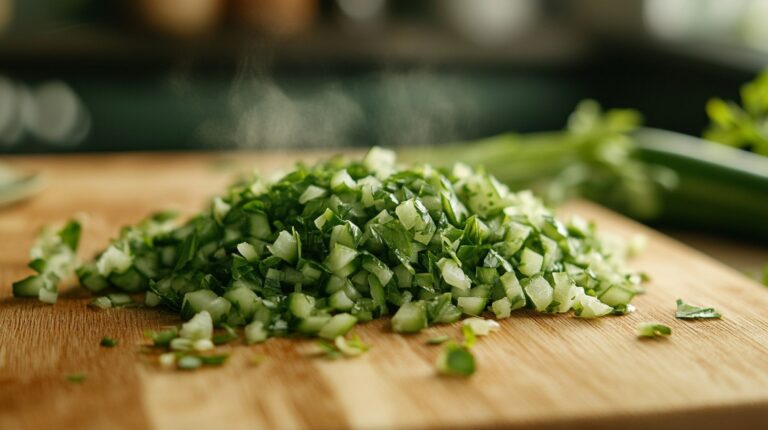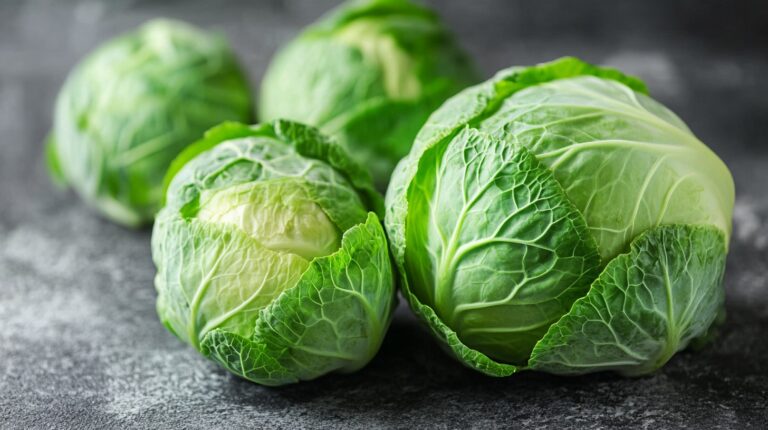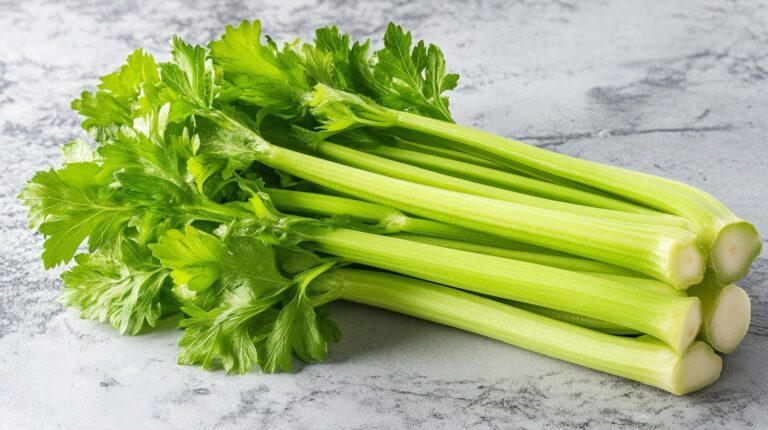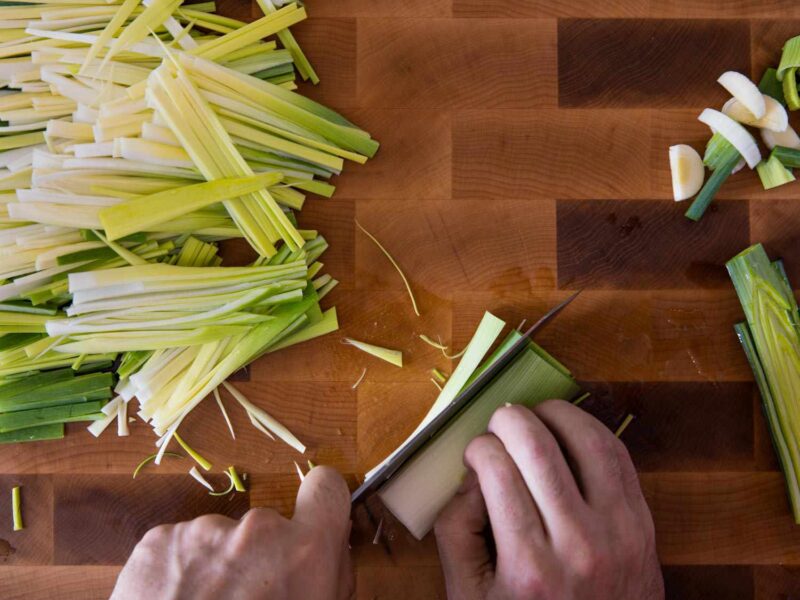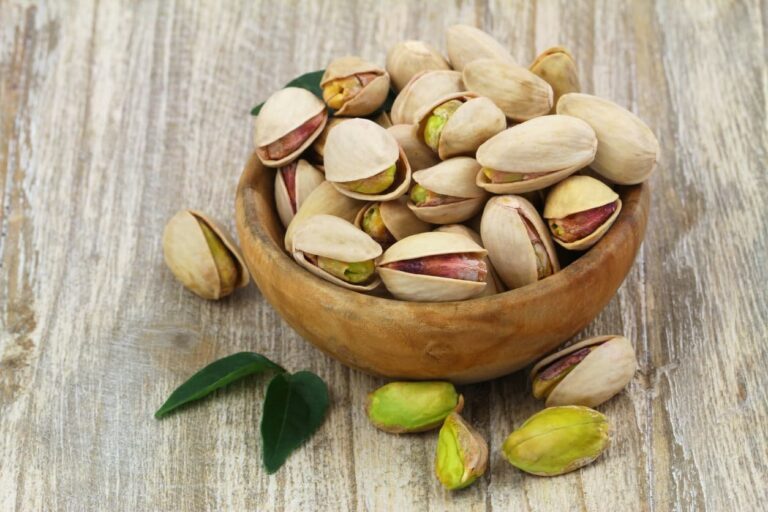Keeping vegetables fresh is essential for maintaining their quality and flavor. Proper storage techniques help prolong the shelf life of leeks, a versatile ingredient in many dishes.
In this article, we will explore the best methods for storing leeks to ensure they stay fresh and ready to use.
Key Takeaways
- Fresh, unwashed, and untrimmed leeks can be stored in the refrigerator for up to two weeks. Wrap them in a damp paper towel and place them in a perforated plastic bag for best results.
- Blanched and properly stored leeks can last in the freezer for up to one year. This method preserves their color, texture, and flavor.
How to Select Fresh Leeks?

To ensure your leeks stay fresh for as long as possible, it’s crucial to start with the freshest leeks available. Here are the key characteristics to look for:
- Firmness: The stalk of a fresh leek should be firm to the touch, much like a fresh onion or cucumber. Avoid any that feel soft or limp.
- Color: Look for leeks with a bright white base that transitions into dark green leaves. Any yellowing or browning indicates age or damage.
- Leaves: The leaves should be tightly rolled and snappy, showing no signs of wilting or withering.
- Roots: Small, hair-like roots at the base are common and indicate fresh produce.
- Odor: Fresh leeks should have a mild, sweet scent typical of the allium family. A strong or unpleasant smell suggests spoilage.
Short-Term Storage in the Refrigerator
For short-term storage, keeping leeks in the refrigerator is the best option. Here are the detailed steps:
- Preparation: Do not wash or trim the leeks before storage. Washing can introduce excess moisture, leading to premature spoilage. Keep the green leaves and root ends intact.
- Packaging: Wrap each leek loosely in a damp paper towel. This helps to maintain moisture levels without making the leeks too wet.
- Storage: Place the wrapped leeks in a perforated plastic bag to allow for air circulation, then store them in the crisper drawer of your refrigerator. This method typically keeps leeks fresh for up to two weeks.
Long-Term Storage in the Freezer

Freezing leeks is an excellent method for long-term storage, ensuring you have leeks on hand for several months. Here’s a comprehensive guide to freezing leeks:
- Preparation: Start by trimming the root end and the dark green tops. Wash the leeks thoroughly to remove any dirt, then slice them into the desired size. Slices of about 1 inch or half-moon shapes work well.
- Blanching: To preserve the color, texture, and flavor, blanch the leeks by boiling them in water for 1-2 minutes. After blanching, immediately transfer the leeks to an ice bath to halt the cooking process.
- Drying: Spread the leeks out on a clean kitchen towel or paper towels to dry completely. Any residual moisture can lead to freezer burn.
- Freezing: Arrange the dried leek slices on a baking sheet in a single layer, making sure they don’t touch. Freeze them for about an hour until they are hard. This step prevents the leeks from sticking together.
- Packaging: Transfer the frozen leeks to an airtight plastic bag or container, removing as much air as possible before sealing. Label the bag with the date for reference. Properly frozen leeks can last up to a year.
Alternatives
For those without access to refrigeration or who prefer different storage methods, leeks can be stored in several alternative ways:
- Root Cellar: Store leeks in a cool, dark place like a root cellar or basement. Ensure the environment is dry to prevent mold. Leeks stored this way can last for several weeks.
- Room Temperature: If refrigeration isn’t an option, place the leeks root-side down in a jar with enough water to cover the roots. Keep the jar in a cool, dry place. This method is only suitable for a day or two.
- Drying: Cut the leeks into small pieces and spread them out on a clean towel or a wire rack. Place them in a well-ventilated area out of direct sunlight. Once fully dried, store them in an airtight container. Dried leeks can last for several months.
- Pickling and Canning: Prepare a pickling solution with vinegar, salt, sugar, and spices. Blanch the leeks, then pack them into sterilized jars with the pickling solution. Properly canned leeks can last for several months and add a tangy flavor to dishes.
Can You Store Them in Room Temperature?
Storing leeks at room temperature is less ideal than refrigeration but can be done for short periods:
- Jar Method: Place the leeks root-side down in a jar with water covering the roots. This method mimics their natural growing conditions and helps keep them fresh for a day or two.
- Cool, Dry Place: If the temperature is moderate, you can store leeks in a cool, dry place away from direct sunlight. This can keep them fresh for up to five days. Ensure the area has good air circulation to prevent moisture buildup, which can lead to spoilage.
Signs of Spoilage
Recognizing when leeks have gone bad is essential to avoid using spoiled produce:
- Texture: Fresh leeks should be firm and crisp. If they become soft, slimy, or limp, it’s a sign of spoilage.
- Color: Look for vibrant green tops and a white base. Yellowing, browning, or darkening indicate the leeks are past their prime.
- Odor: Fresh leeks have a mild, sweet smell. A strong, unpleasant odor suggests they are spoiled.
- Mold: Any signs of mold, whether white or black spots, mean the leeks should be discarded. Mold can spread quickly and affect the entire leek.
- Wilted Leaves: Wilted or withered tops are a sign that the leeks are no longer fresh. While outer leaves may occasionally need peeling, significant wilting indicates spoilage.
Tips for Using Frozen Leeks
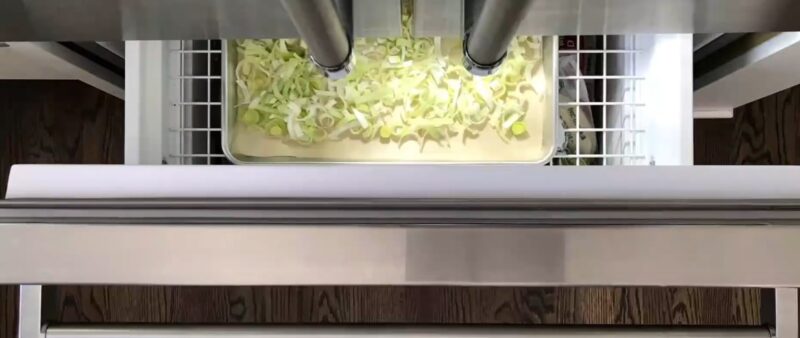
Frozen leeks are versatile and can be used in various dishes without compromising much on their flavor and texture:
- Direct Cooking: Leeks can be added directly from the freezer to your dish. Whether you’re making soups, stews, or stir-fries, frozen leeks integrate well. Just add a few extra minutes to the cooking time.
- Thawing: If your recipe requires thawed leeks, place them in the refrigerator overnight. Thawed leeks can be used similarly to fresh ones, retaining most of their texture and flavor.
Tips for Thawing Frozen Leeks
Proper thawing is essential to maintain the quality of frozen leeks:
- Refrigerator Method: Place the frozen leeks in a container and leave them in the refrigerator overnight. This slow thawing process helps retain their texture.
- Cold Water Method: For a quicker thaw, place the sealed bag of frozen leeks in a bowl of cold water. Change the water every 30 minutes. This method can thaw leeks in a few hours.
- Microwave Method: Use the defrost setting on your microwave if you need to thaw leeks quickly. Be cautious to avoid partially cooking them during the process.
Tips for Canning Leeks
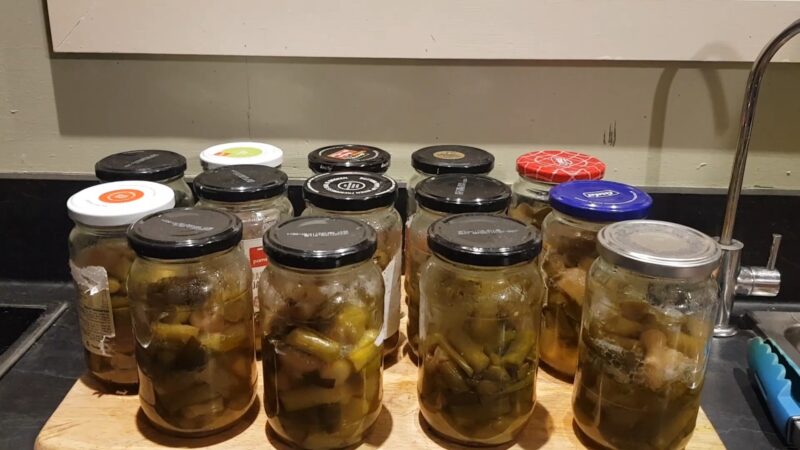
Canning is an excellent method to preserve leeks for an extended period, often up to a year:
- Preparation: Trim, clean, and blanch the leeks. Blanching helps preserve their color, flavor, and texture during the canning process.
- Canning Liquid: Prepare a solution of vinegar, water, salt, and spices like peppercorns, fennel seeds, coriander seeds, and thyme. This mixture enhances the flavor and preserves the leeks.
- Packing: Place the blanched leeks into sterilized jars and fill them with the hot canning liquid, leaving some headspace at the top. Remove any air bubbles by tapping the jars gently and wiping the rims clean before sealing.
- Processing: Process the sealed jars in a boiling water bath for the recommended time based on your altitude and jar size. This step ensures that the leeks are safely preserved.
- Storage: Store the sealed jars in a cool, dark place. Properly canned leeks can last for up to a year, providing a convenient and flavorful addition to your pantry.
Drying Leeks for Preservation
Drying leeks is an effective way to preserve them for long-term storage while retaining their flavor:
- Preparation: Clean and trim the leeks, cutting them into small pieces. Ensure they are thoroughly washed to remove all dirt and debris.
- Drying Method: Spread the leek pieces out in a single layer on a drying rack or baking sheet. Place the rack in a well-ventilated area away from direct sunlight. Alternatively, use a food dehydrator set at a low temperature.
- Duration: Allow the leeks to dry completely, which may take several days depending on the humidity and air circulation. The leeks are adequately dried when they become brittle and snap easily.
- Storage: Store the dried leeks in an airtight container in a cool, dark place. Properly dried and stored leeks can last for several months, making them a convenient addition to your pantry.
Storing in Containers and Bags
Choosing the right storage containers and bags can significantly impact the freshness of your leeks:
- Plastic Bags: Perforated plastic bags are ideal for storing leeks in the refrigerator as they allow for air circulation while maintaining moisture levels.
- Airtight Containers: For freezing or long-term storage, use airtight plastic containers or freezer bags. Removing as much air as possible before sealing helps prevent freezer burn and extends the shelf life.
- Glass Jars: When canning leeks, sterilized glass jars with tight-sealing lids are essential to ensure a safe and prolonged storage period. Mason jars are a popular choice for this purpose.
- Moisture-Proof Containers: For dried leeks, use moisture-proof containers to protect them from humidity and preserve their dryness and flavor.
How to Keep Them Fresh?
To keep leeks as fresh as possible, follow these maintenance tips:
- Regular Checks: Periodically check stored leeks for signs of spoilage, such as wilting, yellowing, or mold. Remove any spoiled portions immediately to prevent them from affecting the rest.
- Humidity Control: Maintain optimal humidity levels in your storage area. The crisper drawer in your refrigerator is designed to manage humidity, making it an ideal place for storing fresh leeks.
- Avoid Washing: Do not wash leeks before storing them. The added moisture can accelerate spoilage. Only wash leeks right before using them.
- Proper Sealing: Ensure that all containers and bags are properly sealed to minimize exposure to air and contaminants. This is particularly important for frozen and canned leeks.
Clean Them Before Storage
Proper cleaning is essential to maintain leek freshness and prevent contamination:
- Initial Rinse: Rinse the leeks under cold running water to remove visible dirt. Pay special attention to the root area where dirt tends to accumulate.
- Lengthwise Cut: Cut the leeks in half lengthwise, which helps to expose the inner layers and makes it easier to clean thoroughly.
- Layer Separation: Fan out the layers under running water to flush out any hidden dirt and grit between the layers. Grit and dirt often get trapped in the multiple layers of leeks.
- Drying: Pat the leeks dry with a clean kitchen towel or paper towels to remove excess moisture before storage. This helps prevent premature spoilage due to excess water.
Storing Cooked or Cut
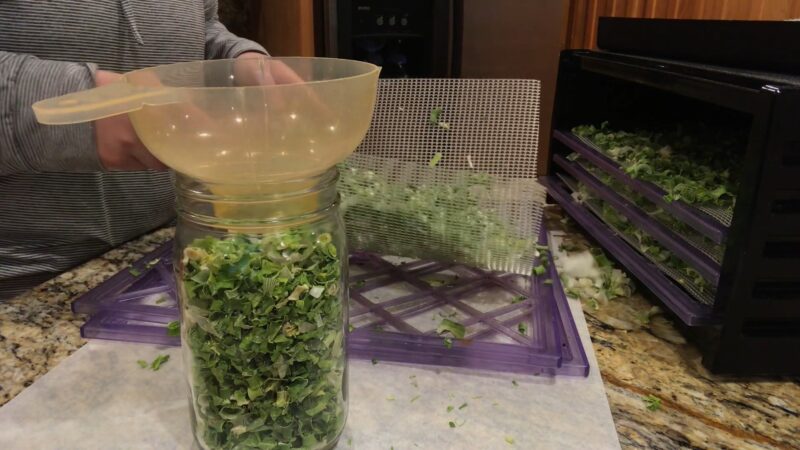
Storing cooked or cut leeks requires careful handling to maintain their quality:
- Refrigeration: Place cooked or cut leeks in an airtight container or a resealable plastic bag. Store them in the refrigerator where they can last for 3 to 4 days.
- Avoid Freezing Cooked Leeks: While raw leeks can be frozen, cooked leeks may become mushy when thawed. If freezing is necessary, ensure they are blanched but not fully cooked before freezing.
- Moisture Control: Ensure that the container is sealed properly to prevent moisture loss or contamination from other foods in the refrigerator.
Common Mistakes to Avoid
Avoid these common mistakes to ensure your leeks remain fresh and flavorful:
- Washing Before Storage: Washing leeks before storage can introduce excess moisture, leading to quicker spoilage. Always wash leeks just before using them.
- Improper Sealing: Failing to properly seal storage bags or containers can lead to moisture loss, freezer burn, or contamination. Always ensure airtight sealing.
- Storing at Room Temperature for Too Long: Leeks can only be kept at room temperature for a short period (3 to 5 days). Prolonged exposure can cause them to spoil quickly.
- Overcrowding: Overcrowding leeks in the storage area can lead to bruising and increased moisture accumulation. Store leeks in a way that allows air circulation.
- Neglecting to Blanch Before Freezing: Freezing raw leeks without blanching can affect their texture and flavor. Always blanch leeks before freezing to preserve their quality.
FAQs
How can I use leeks in my cooking?
Leeks are highly versatile and can be used in numerous dishes. They are excellent in soups, stews, quiches, and casseroles. You can also grill, roast, or sauté them as a side dish. The white and light green parts are tender and flavorful, perfect for adding a mild, sweet onion-like taste to recipes.
The tougher dark green tops are great for adding flavor to stocks and broths. Leeks pair well with potatoes, cheese, and various meats, enhancing both vegetarian and meat-based dishes.
Are leeks nutritious?
Yes, leeks are packed with nutrients. A 100-gram serving of raw leeks contains about 61 calories, 14 grams of carbohydrates, 1.5 grams of protein, and 0.3 grams of fat. They are an excellent source of vitamins A, C, and K, and they also provide important minerals like iron and manganese.
Leeks are rich in antioxidants and contain allicin, a compound known for its antibacterial, antiviral, and antifungal properties. They also have fiber, which aids in digestion and supports a healthy gut.
Can I regrow leeks from scraps?
Yes, regrowing leeks from scraps is possible and quite simple. Take the root end of the leek, about 2-3 inches in length, and place it in a shallow container with just enough water to cover the roots. Place the container on a sunny windowsill and change the water every couple of days.
In about a week, you will notice new growth from the center. Once the roots have grown a few inches, you can transplant the leek into soil. This method allows you to grow new leeks and reduce waste.
How do I prevent leeks from making other foods in the refrigerator smell?
Leeks have a strong aroma that can transfer to other foods in the refrigerator. To prevent this, store leeks in a tightly sealed container or a resealable plastic bag. This helps to contain their smell.
Additionally, placing the leeks in the crisper drawer, which is designed to maintain humidity and separate produce from other foods, can help mitigate the spread of their odor.
Can I use the green tops of leeks?
Yes, the dark green tops of leeks are edible, although they are tougher than the white and light green parts. They are best used in making stocks and broths, where they can be simmered for an extended period to extract their flavor.
They can also be finely chopped and sautéed or added to stews and casseroles where longer cooking times can soften them. These tops are rich in nutrients and add a robust flavor to dishes.
Last Words
Proper storage of leeks ensures they remain fresh and flavorful for your culinary needs. By following the best practices outlined in this guide, you can extend the shelf life of your leeks and reduce food waste. Ensuring proper handling and storage of leeks will allow you to enjoy this versatile vegetable in a variety of dishes whenever you need them.
Related Posts:
- How Long Can Jasmine Rice Be Stored Without Losing Quality?
- Freezing Cabbage: Tips and Tricks for Long-Term Storage
- How Much Chicken Is 3 Ounces and What Can You…
- How to Use Sage in Cooking - Fresh or Dried?
- How Do You Store Ginger Root to Keep It Fresh?
- How Do Tangerines and Clementines Differ in Taste…



